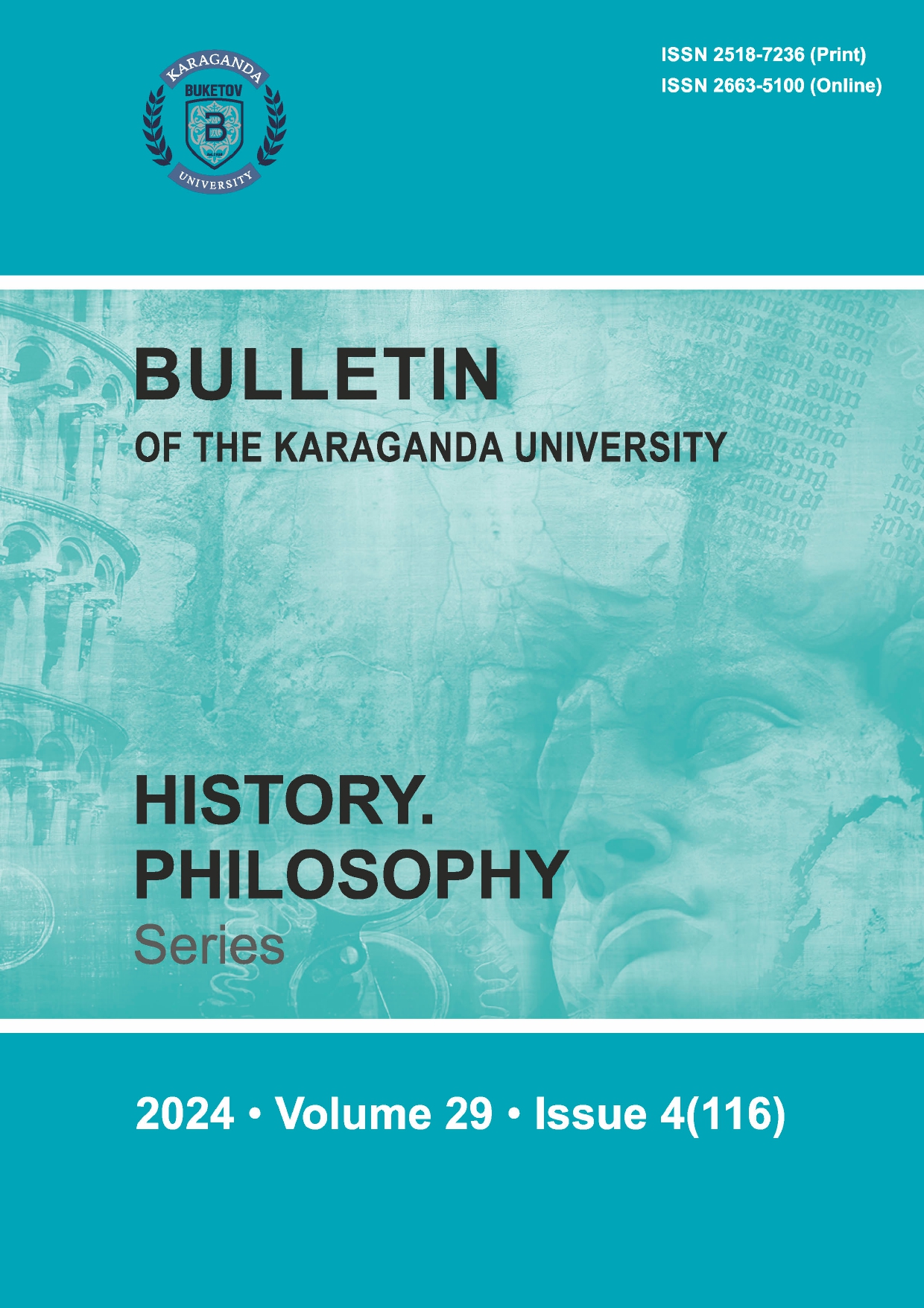Main components of burial and material culture of scythian-saki population of mountain steppe regions of Eastern Kazakhstan
DOI:
https://doi.org/10.31489/2024hph4/186-200Keywords:
East Kazakhstan, Upper Irtysh region, burial ground, mound, Scythian-Saka timeAbstract
Early Iron Age burial complexes were considered. The materials reflect the peculiarities of the development of the Scythian-Saka tribes that lived within the steppe zone of the Kazakhstan Irtysh region. The main part of the funerary objects studied in the Irtysh valley north of the Mouth of the Stone Mountains is represented by separate mounds. The monuments were located separately, later becoming centers of the formation of medieval burial grounds left by carriers of Turkic traditions, who considered earlier mounds as burials of their an cestors. Field studies in the northeastern zone of East Kazakhstan showed the saturation of this territory with memorial objects left by nomads in different historical periods. The Gerasimovka burial ground, uniting only the mounds of the early nomads of the Scythian-Saka time, can be considered as an exception.




